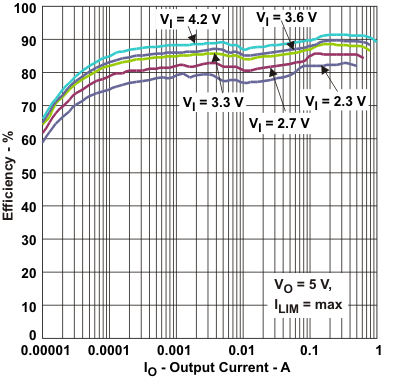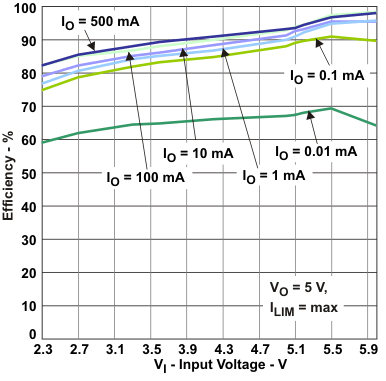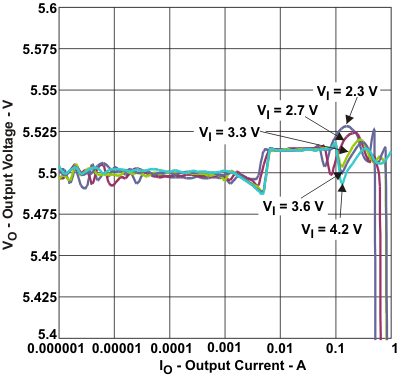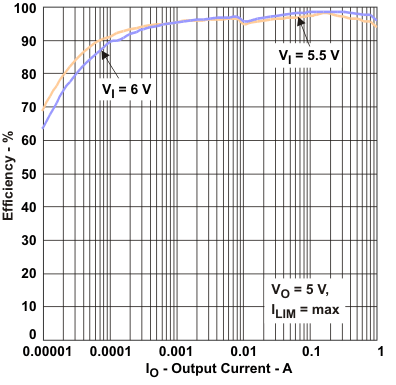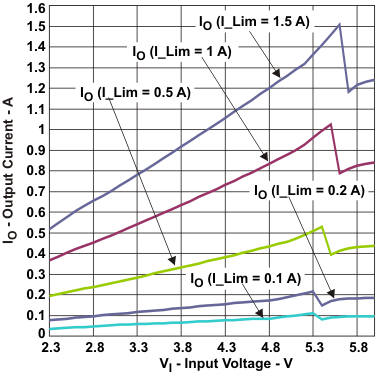SLVSAF7C September 2010 – April 2019 TPS61251
PRODUCTION DATA.
- 1 Features
- 2 Applications
- 3 Description
- 4 Revision History
- 5 Description (Continued)
- 6 Device Options
- 7 Pin Configuration and Functions
- 8 Specifications
- 9 Detailed Description
- 10Application and Implementation
- 11Power Supply Recommendations
- 12Layout
- 13Device and Documentation Support
- 14Mechanical, Packaging, and Orderable Information
8.6 Typical Characteristics
Table 1. Table Of Graphs
| DESCRIPTION | FIGURE | |
|---|---|---|
| Efficiency | vs Output current (VOUT = 5.5 V, ILIM = 1.5 A, R1 = 2320 kΩ and R2 = 649 kΩ) | Figure 1 |
| vs Output current in 100% Duty-Cycle Mode (VOUT = 5.5V, ILIM = 1.5 A, R1 = 2320 kΩ and R2 = 649 kΩ) | Figure 2 | |
| vs Input voltage (VOUT = 5.5 V, ILOAD = {0.01;0.1; 1.0; 10; 100; 500 mA}, R1 = 2320 kΩ and R2 = 649 kΩ) | Figure 3 | |
| Maximum output current | vs Input voltage (VOUT = 5.5 V, ILIM = {100; 200; 500; 1000; 1500 mA}, R1 = 1000 kΩ and R2 = 280 kΩ) | Figure 4 |
| Output voltage | vs Output current (VOUT = 5.5 V, ILIM = 1.5 A, R1 = 1000 kΩ and R2 = 280 kΩ) | Figure 5 |
